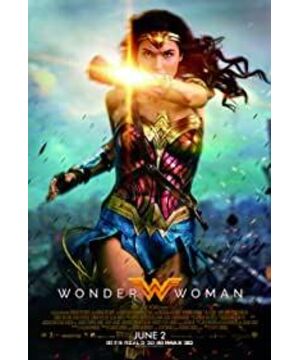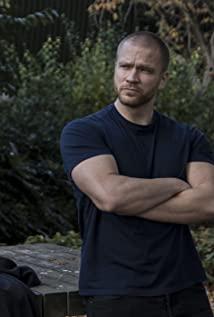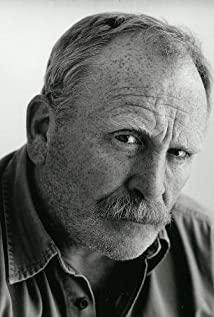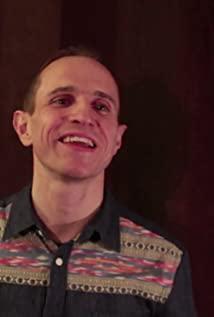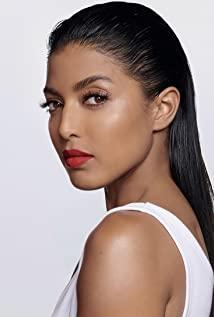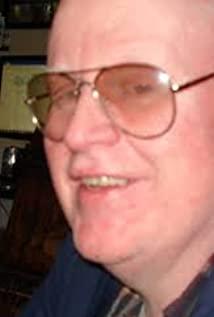In the more than 70 years since the birth of Wonder Woman, "feminism" has always been a label that cannot be removed from her. When the Wonder Woman movie is released, I would like to briefly review and sort out the fetters between Wonder Woman and the development of feminism.
Last year was the 75th birthday of Wonder Woman. The news that "Wonder Woman, who was appointed as the UN Feminist Ambassador, was suspended in less than two months" has been hyped by the media both at home and abroad. In various reports, the editors used a lot of seemingly sensational words in order to attract people's attention, such as "big breasts with exposed legs", "exposed clothing", "white women", etc., I wonder if Ms. Ding Xuan sees such things. What do you think of your text.
Frankly speaking, the changes in the character image of Wonder Woman have always reflected at least the trajectory of feminist development in American society. Since the birth of Wonder Woman, every turbulent or setback of feminist waves has been closely related to her, or Inspire every woman who has suffered unfair treatment to raise her arms and shout, either for feminists to spread the equality and liberation of women, or even in some special historical periods, it was promoted as an anti-feminist image by patriarchs. represent.
When the Wonder Woman movie was released, I wanted to review and sort out the fetters between this heroine and the development of American feminism from the day Wonder Woman was born 76 years ago.
origin
The first wave of feminism (First-wave feminism) began in the Seneca Falls Convention in the mid-19th century and ended with the victory of women's voting rights in the 1920s. Harvard University is also in the midst of this magnificent wave. In 1890, Radcliffe College (Radcliffe College) was established by name and became a member of the famous Seven Sisters College League; in 1911, Harvard Women Elected Men’s League (Harvard Men's League for Woman Suffrage) invited Emmeline Pankhurst, the leader of the famous women's suffrage movement to give a lecture at Harvard, and the Harvard School Board of Directors ruled on this: absolutely not ("absolutely not!"). The final speech was arranged in an unremarkable ballroom near Café Algiers on Brattle Street. This speech attracted a large number of students who were influenced by the feminist wave of the time. About 900 people squeezed into the hall, which was only big enough for two hundred people, including a student named William Moulton Marston. Thirty years later, it was exactly Marston created the first female superhero in history: Wonder Woman.
It is not an exaggeration to say that the emergence of Wonder Woman was born from feminist ideas. Let's take a look at the experience of her creator William Morton Marston. In 1918, Marston had obtained two bachelor's degrees from Harvard and was about to obtain a doctorate in psychology. This year he met Elizabeth Holloway, a law classmate at Mount Holyoke College. ), the two quickly fell in love and became married. Subsequently, the two conducted research on female psychology and conducted a number of academic experiments on the relationship between the emotions of the sexes and blood pressure. The two people’s research during this period directly contributed to another great achievement of Marston: blood pressure. Polygraph, the predecessor of modern polygraph. Their research attempts to prove that women are more reliable, honest, and conscientious than men under the same pressure, and are more suitable to testify in court or serve as jurors. This challenged the inherent gender psychology and political atmosphere at the time, and caused the Marstons to have to Leaving the American University where he taught, returning to Boston to continue his studies at Tufts University, and it was here that Marston met and fell in love with another outstanding woman, her teaching assistant Olive Byrne (Olive Byrne). Oliver Byrne was the daughter of the famous Ethel Byrne, and Ethel Byrne and her sister Margaret Sanger were famous leaders of the feminist movement at the time. They advocated for women to take control of their own reproductive rights. They were arrested for opening an abortion clinic in Brooklyn, and later assisted in the invention and legalization of contraceptives in Europe.
It can be seen that Marston’s early experience played a decisive role in his creation of the comic image of Wonder Woman. In 1940, Marston came to work at All-American Publications, the predecessor of DC Comics. His previous academic research convinced him that women have tougher characters, more efficient work, and better lives in life. He often handles affairs from the perspective of kindness and love. He even thinks that the future world will be dominated by women ("rule the world"), influenced by his wife Elizabeth and lover Oliver Byrne, both of whom A staunch feminist, he finally decided to create a new era of non-traditional, free and liberating female comics.
Early
Wonder Woman debuted in the All Star Comics #8 (All Star Comics #8) in October 1941. She was designed by Marston as an Amazonian princess named Diana, the paradise she lives in Island, there are only women but no men. In ancient Greek mythology, the Amazon tribe was ruled by women and did not need to rely on men to live. As women, they were brave and good at fighting. However, in Wonder Woman comics, Amazonians are committed to love and peace. This image fits Masi. Dayton's vision for the future world: dominated by beautiful and good women.
In the traditional origin of comics, one day a fighter plane crashed into Paradise Island, and it was the man on this plane, Steve Trevor, who brought Diana into our society. The description in the comics is just like the real world. At the end of 1941, the United States declared war on Japan. Thousands of soldiers went to the Pacific and European battlefields. During that war, the majority of American women accepted the mobilization of the country, left their families, and walked into factories. And the workshop, participating in work, but also taking care of housework, they soon discovered that they can do the same work as men, and even they can do better than men in some aspects. The emergence of Wonder Woman even more inspired women. They built and flew planes. They supported and joined the army. A group of hard-working and brave American women appeared on the battlefield of World War II.
Wonder Woman came to our society to fight for the rights of women, so that men caught in violence and war understand the value of peace and love. Throughout World War II, the story of Wonder Woman revolved around the adventures of Diana and Steve. Diana had a crush on Steve, but she did not rely on Steve. In the relationship between the two, Diana was more Playing the role of savior is undoubtedly a significant breakthrough. This teaches women that as long as they believe in themselves and constantly improve themselves, anyone can become a Wonder Woman.
In the golden age of American comics, the most common scene is a weak woman, tied up by villains, waiting for male superheroes to rescue herself, and such scenes are hardly found in the early comics of Wonder Woman. Of course, Wonder Woman will also be restrained by the villain, but she always relies on her own strength to break free and give a fatal blow to the surprised villain. This also tells female readers in the most intuitive way: "The shackles on your shoulders require you to break free. Men will not come to save you. Only yourself and the sisters around you can save you."
low tide
Unfortunately, the female brilliance represented by Wonder Woman in the comics only lasted for a while, and soon ushered in setbacks. At the end of World War II, a large number of soldiers returned to the United States. Women once again accepted the call of the country, but unlike a few years ago, they were asked to leave the factory, return to their families, and give up their jobs to the soldiers who returned home. NS. As a result, Wonder Woman became a victim of this policy of the United States. Her feminist aura was lightly erased, and her ability as an Amazon warrior was also weakened. The editors blindly emphasized her love for Steve. For a period of time, Diana never rescued the victims bravely, but saved for Steve. Wonder Woman is no longer a representative of feminism before, and has become a common female image in traditional works.
However, the United States, which has gradually become on the right track after sweeping away the haze after the war, has not ended this use of female cartoon characters to suppress feminism, but has intensified.
In the 1950s, during the dark medieval period of American comics, a book that caused a serious blow to the entire American comic industry was officially published. Dr. Frederick Wiltham wrote a book called Seduction of the Innocent. The Innocent's book, literally attributed the problem of rising juvenile crime rates in the United States at the time to comics. In the book, he tried to exaggerate the violence of the comics at that time, especially the superhero comics and the description of the details of the crime (superheroes and super criminals). Fighting), and accused the comics of being full of pornography and sexual abuse (the tights of the comics and the front-curved figure). The most ridiculous thing is that he criticized the comics for publicly promoting homosexuality to teenagers (such as Batman and Robin). .
In this catastrophe, Wonder Woman could not escape the fate of being criticized. Wiltam accused Wonder Woman of being a lesbian. Although she had a marriage relationship with Steve in the comics, he still identified Wonder Woman. Xia is an "anti-male" figure, an abnormal view of the two sexes. At that time, the feminist movement in the United States was at a low point. Wiltham was able to attack Wonder Woman in a fair way. He once persuaded girls not to watch the magic in public. Woman comics, the reason is that the role of Wonder Woman is too strong, which will make girls feel that non-comic books are too bland.
Therefore, under pressure, the Amazon tribe in the comics was transferred to another dimension. In order to stay with Steve and assist him, Diana gave up her identity as Wonder Woman. Since then, Wonder Woman has lost her superpowers and Equipped, instead, Diana became an American spy and continued her story in a boutique wearing a jumpsuit.
return
In the 1960s, American female writer Betty Fleton wrote the book "The Feminine Mystique" under the influence of "Second Sex." Being imprisoned at home wastes their talent and potential. The images of women portrayed by various media are in fact unhappy. Only through self-liberation and social emancipation can women find themselves. This book set off a second wave of feminism (Second-wave feminism), and the arguments in the book coincide with the original concept of Wonder Woman's creation, and the return of Wonder Woman's classic setting has also appeared loose.
Women’s efforts for self-liberation and equality were still ridiculed by mainstream ideological groups at the time, and even the female group was shaken. Therefore, the leaders of the feminist movement realized that they needed a stronger propaganda vehicle to inspire. The majority of women compatriots. "Ms." magazine is one of the most successful products of this wave. It is also one of the main propaganda platforms in the early stage of this wave. The idea of "you can't have democracy without feminism" ("you can't have democracy without feminism"), so Wonder Woman in the classic female warrior costume appeared on the cover of Ms.'s first issue, marking the first time Wonder Woman Connect with feminism in formal occasions. Subsequently, with the strong lobbying of the magazine’s creators, DC’s editors finally allowed Wonder Woman to regain superpowers in the Wonder Woman Vol 1 #204 comic, and at the same time regain the classic Amazonian warrior costumes and Equipment, also added a sister role named Nubia (Nubia). Since then, Wonder Woman has officially become the iconic figure of feminism.
In the middle and late stages of the second wave of feminism, TV became more and more popular among American mass families, and Wonder Woman also jumped from comic books to TV screens, presenting her adventure stories in a wider range of fields. Lynda Carter (Lynda Carter) absolutely has her own strong mark in the development history of Wonder Woman. She starred in the TV series Wonder Woman from 1976 to 1979. Although there were only 60 episodes in this TV series in three years, it succeeded in realizing and concretizing the comic character of Wonder Woman. Wonder Woman is no longer just an image, but has a real-world spokesperson. It is Linda Carter. She has influenced a generation of women. In that era, how many women saw their shadow in Linda Carter's body, and how many little girls turned and transformed themselves like Linda Carter on TV. Compared with the comics, the Wonder Woman in the TV series has made significant progress. Of course, it is also because of the influence of the second wave of feminism. That is, Wonder Woman will pay more attention to enlightening women who go astray in the story. More distinctive female caring thoughts.
After the great success of Wonder Woman TV series, more TV series featuring women as the protagonist emerged like spring after the rain. The heroines in these TV series generally have the shadow of Wonder Woman, and they embody the trend of this wave. Theme: Women themselves are power. To become a hero, women do not need to make themselves masculine, but only need to be good at using love, tolerance and kindness.
now
With the end of the second wave of feminism, the idea of women being self-reliant seems to have been accepted by the public. In the 1980s, a group of female superheroes with fresh changes in the comics field were touted, such as Storm and Surprise. Ms. Marvel, Gin, Black Widow, etc. On the contrary, Wonder Woman has been neglected by feminist organizations.
Looking at the field of film and television again, in the 1980s, a generation of muscular male stars such as Stallone, Schwarzenegger, Shangrwinton, Bruce Willis, etc. were greatly welcomed by the audience. This is another counterattack of mainstream patriarchal thinking, and it can be regarded as the first time. The counterattack of the second wave of feminism. In contrast, female film and television roles have almost given up the power of women conveyed by Linda Carter’s Wonder Woman, such as Sarah Connor in the Terminator series and Ripley in the opposite sex series. ), they all use the masculinity of the female protagonist to fight against the muscular male star. The image of a female hero who holds a heavy machine gun in one hand and protects children on the other is all the rage.
In the end, the 1980s in the United States, where patriarchy and feminist rights faced off, ended in a movie called Thelma and Louise. In my opinion, the third wave of feminism that began in the 1990s ( The starting point of Third-wave feminism) is this end of the wild flower. At the end of the film, Louis and Selma’s flew over the history of fame, but also over Anita Hill's defense, over the psychological bottom line of women in the United States, the third wave of feminism officially Pull away. For their rights, women in the new era are more determined and more fierce than any previous struggle. "Feminism speaks here!" This slogan has been shouted louder than ever before.
Wonder Woman once again returned to the public eye, bringing a new era of stories. In the 1985 event "Crisis on Infinite Earth" (Crisis on Infinite Earth), Wonder Woman did not blindly follow the two facades of DC, Batman and Superman. She She has her own thoughts and judgments; in the 1991 event "War of the Gods" (War of the Gods), Wonder Woman traded her "sacrifice" for peace; the 2006 event "one year later" ( In One Year Later), Wonder Woman completes her inner self-reconciliation.
Today, although the third wave of feminism is not over, it must be said that it has entered a period of calm. In recent years, feminism has appeared in American society as a governance right, affecting everyone. I don’t want and have no ability to evaluate the right and wrong of this matter, but I have a illusion that the feminist label on Wonder Woman is gradually disappearing in the pan-entertainment society. Of course, we can conspiracy to argue that this is another counterattack by the patriarchal society, because after all, in the upper reaches of popular culture in various fields, it is men who control the market and the distribution of resources. Then we might as well take a look at this Wonder Woman movie, which may provide a little argument for our judgment. The first superhero movie directed by a woman may have something worthy of fun.
Finally, Ms. Ding Xuan, screw you!
View more about Wonder Woman reviews


